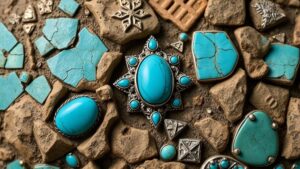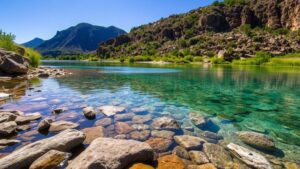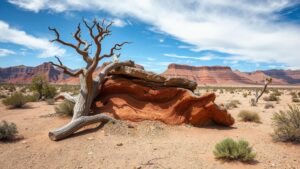Amber of the Arctic: Unearthing Fossilized Resin in Northern Icefields
Amber of the Arctic: Unearthing Fossilized Resin in Northern Icefields
Amber has captivated human imagination for centuries with its warm hues and natural beauty. While traditional amber is often sourced from tropical regions, recent discoveries have revealed a different form of this fossilized resin in the icy expanses of the Arctic and sub-Arctic regions. This article delves into the unique characteristics of Arctic amber, its geological significance, and practical insights for rockhounds and mineral collectors.
The Science of Amber Formation
Amber is the fossilized resin from ancient trees, primarily from the Pinaceae family, dated back as far as 320 million years. formation process begins when the trees exude resin, which traps organic materials, including insects and plant matter. Over millions of years, the resin undergoes chemical changes and polymerization, solidifying into amber.
In Arctic regions, specifically within the geological realms of the Late Cretaceous to Early Tertiary periods, amber deposits have been found. One significant area includes the Sverdrup Basin in the Canadian Arctic Archipelago, where amber has been dated to approximately 80 million years ago. This amber differs from its warmer-climate counterparts, primarily due to the unique types of flora that contributed to its formation.
Unique Characteristics of Arctic Amber
Arctic amber showcases several distinct features that appeal to collectors:
- Color Variations: Arctic amber commonly presents hues ranging from honey-yellow to a darker brown. In certain cases, green and blue tones can also be observed, a rarity that greatly increases its value.
- Inclusions: Much like its tropical relatives, Arctic amber often contains inclusions–tiny plants, insect bodies, and other organic matter. Notably, fossilized insects found within Arctic amber often belong to species not observed today, making these specimens invaluable for scientific research.
- Transparency: The transparency of Arctic amber can vary, with some pieces being remarkably clear, showcasing embedded inclusions beautifully, while others may exhibit more opaque characteristics.
Finding Arctic Amber
For rockhounds eager to hunt for Arctic amber, understanding where to look is crucial. Here are some prime locations:
- Glacial Deposits: As glaciers retreat, they often expose ancient organic materials, including amber. Regions such as the eastern Canadian Arctic are promising.
- Coastal Bluffs: The cliff sides of Arctic coasts may hold ancient deposits of amber. Collectors should ensure they follow local laws regarding collection.
Before embarking on an amber-hunting expedition, ensure you have the appropriate permissions to collect and follow local guidelines to protect the environment. Employ tools like hand picks, sieves, and brushes to carefully extract desired specimens without damaging them.
The Collecting Community and Resources
The growing interest in Arctic amber has led to the formation of communities dedicated to collecting and studying this resin, with activities often organized through various mineral shows and rockhound clubs. Participating in these groups can provide valuable insights:
- Networking: Connecting with other collectors can lead to information about locations and best practices.
- Workshops: Many clubs offer workshops on resin preservation and display techniques for optimal showcasing of collections.
Investing in Arctic Amber
For collectors, investing in Arctic amber can be a rewarding endeavor, both personally and financially. Its scarcity and the precise geological conditions under which it forms contribute to its value. average price of high-quality amber pieces can range from $20 to over $1000, influenced by factors such as clarity, color, size, and unique inclusions.
Also, keep in mind that the value of amber fluctuations with trends in the fossil and gem markets. Staying informed through news sources, auction results, and academic publications can go a long way in ensuring a collector maximizes their investment.
Conclusion
The exploration of Arctic amber offers a fascinating intersection of paleontology, geology, and artistry. As you embark on your adventures in the icy landscapes, remember the significance of the natural world you’re uncovering–pieces of history that have preserved moments millions of years past. By combining knowledge, community, and respect for the environment, you can enhance your collecting experience while contributing to the appreciation and understanding of this remarkable ancient resin.



